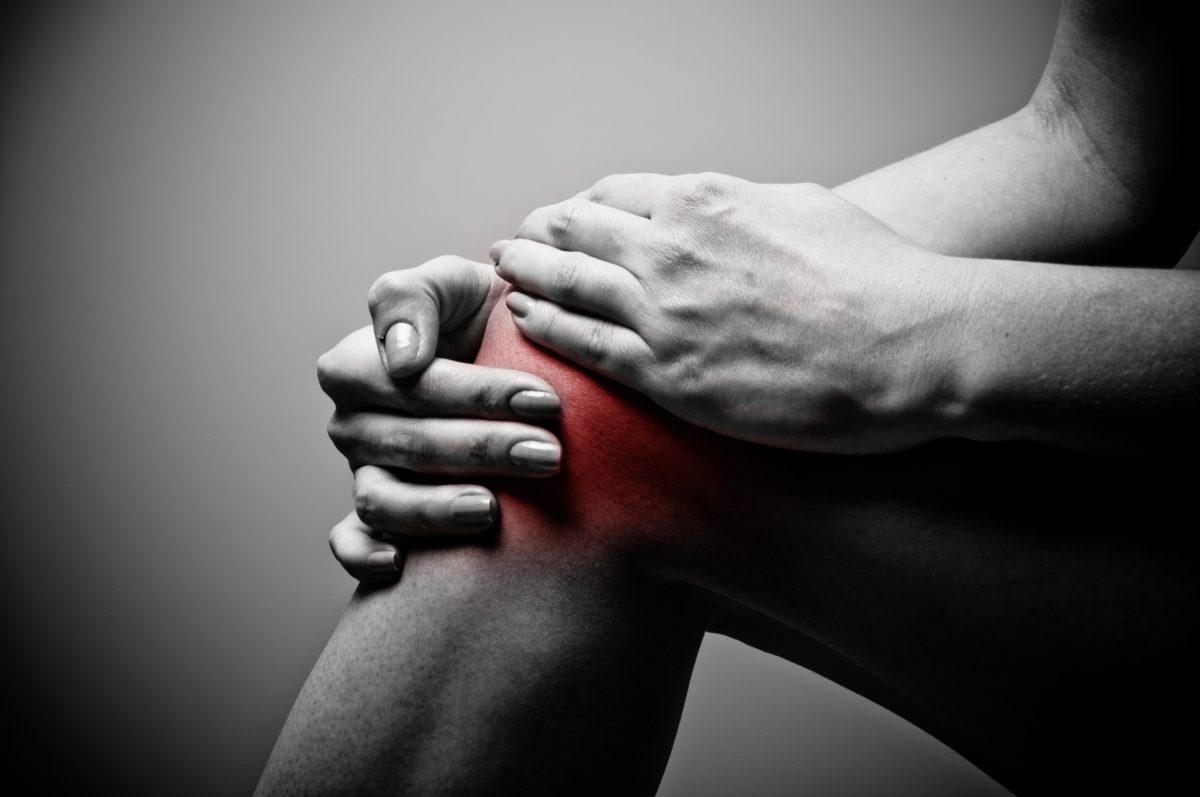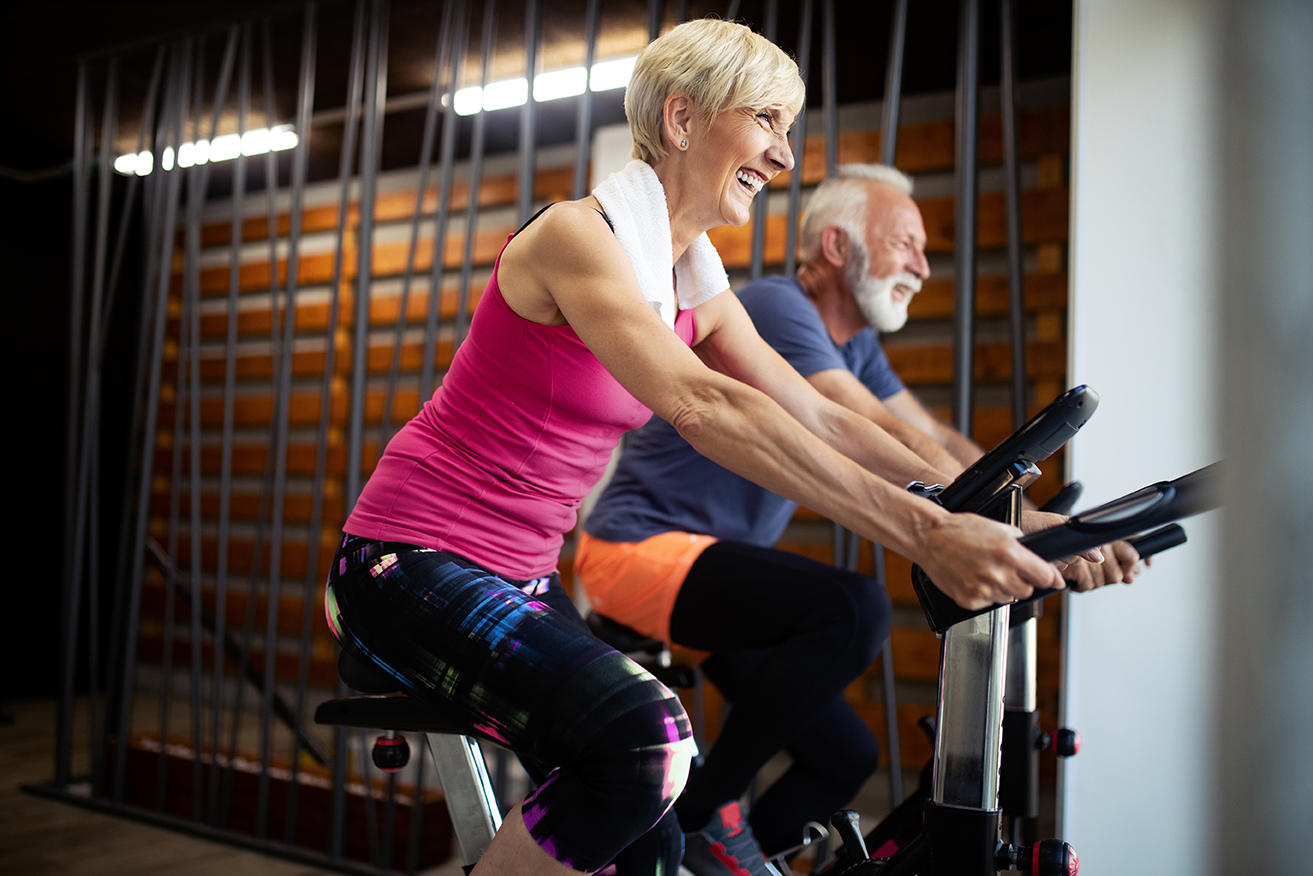Why is a bike so good for your knees?
When it comes to knee pain, it is hard to know what activities will help them feel better
While…
It is pretty easy to know what makes your knees feel worse: jumping, running, quick changes in direction, even going up or down stairs.

Why some activities make your knees feel worse
Let’s explore the WHY of knee pain before we get in to how to make your knees feel better.
WEIGHT BEARING
If you have knee pain, it could be caused by an injury (typically torn ligaments, cartilage, bursitis, dislocation) or maybe you are suffering from something like osteoarthritis where there is inflammation and bony changes inside the joint.
When you are on your feet, your knees are weight-bearing joints. That means your body weight is going through them. If you have knee pain and you are overweight, those extra pounds will likely make your knees hurt worse.
Your knee is especially vulnerable because of its wide range of motion. There are many positions in which your knee can be damaged. Note: For cardio activity, where you are doing a many-times repeated motion, you may want to exclude weight-bearing exercises. This, of course, is not the rule for strength training since weight-bearing is actually GOOD to strengthen your bones.
IMPACT FORCES
“Impact” refers to the force that goes through the knee joint caused by your foot striking the ground. As you walk, run, or jump, the forces transmitted are multiplied by your body weight:
- Walking 2-3 X Body Weight [1]
- Running 4-14 X body weight [2]
- Jumping 9+ X body weight
There are also sheer forces through the knee caused by gravity and resistance, like when you slow down, walk down a hill, or come to a sudden stop.
If you have knee pain, you can see why walking, running, or jumping may exacerbate the pain. Again, if you are carrying extra body weight this creates more force on every step through your knee and is a good reason that doctors want you to be a healthy weight before a knee surgery.
LATERAL MOVEMENT
For some people, moving side to side causes pain. Think basketball shuffle or doing a carioca side line step in your athletic training class (not to be confused with Karaoke which usually involves drunken singing). Pain here may be caused by collateral ligament issues, meniscus cartilage issues, or joint changes.
I know in my case because of my arthritic changes to the lateral (outsides) of my knees, side to side movement was excruciating.

Is moving your knee actually good for it?
Your knee is the largest joint in the body and it is made to move. When you stop bending it so much, it may start to feel like a rusty hinge. That may be due to the joint’s synovial fluid (think lubricant) has gotten thin. Thin synovial fluid can be caused by many factors, including dehydration, poor diet, or lack of movement, to name a few.
The right kind of movement will stimulate your joint to produce thick and healthy synovial fluid that can do its job of reducing friction and nourishing cartilage. Healthy synovial fluid may reduce your pain – and that is good.
If impact movement, like running, causes you pain, it’s time to find a way to reduce impact. Try these options:
- Elliptical Machine
- Swimming
- Rowing
- Biking
If weight-bearing movement, (when you are standing up) like using an elliptical machine bothers your knees, try one of these:
- Swimming
- Rowing
- Biking
If Lateral movement also bothers you, you may have to eliminate swimming because if your knee joint is “loose” (like mine was), kicking during swimming may not feel so good.
So that leaves us with
- Rowing
- Biking
While I row on an indoor ergometer, my tool of choice is a BIKE. You can do it indoors on your own or in a class. You can ride a bike outside for exercise, commuting, for adventure touring. Riding a bike is simply fun.
Article originally printed on HealthyKneesCoach.com. Reprinted with permission.
Robin Robertson is the international best selling author of “Healthy Knees Cycling”, “Healthy Knees Strength”, and “Healthy Knees Total Knee Replacement”. She has owned and operated the Bellingham Training & Tennis Club since 2000. Robin is accomplished in a variety of training methods including Functional Aging Specialist, ACE-certified personal trainer, USA Cycling Coach, and founder of Healthy Knees Coach.
References
[1] PMC US National Library of Medicine, National Institutes of Health. (2013). Knee Joint Forces: Prediction, Measurement, and Significance. Retrieved on 12/6/19 from https://www.ncbi.nlm.nih.gov/pmc/articles/PMC3324308
[2] Medscape.com (2015) Joint Loading in Runners Does Not Initiate Knee Osteoarthritis. Retrieved on 12/6/19 from: http://www.azisks.com/wp-content/uploads/2017/04/Joint-Loading-in-Runners-Does-Not-Initiate-Knee-Osteoarthritis.pdf
